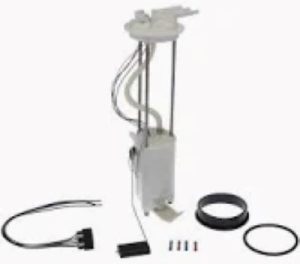The most important indicators to know are failing to start, engine cutting out or not firing, and low firing pressure. Fuel pump troubleshooting always starts with these simple things. Most fuel pump works at a pressure of 40 to 60 PSI and, if the pressure start to diminish, that can be a sign that the fuel pump need to be replaced. A fuel pressure gauge can be used to check the pressure at the fuel rail using the manufacturers specifications. A reading that falls below the anticipated PSI range may signify a fuel filter blockage, pump layoffs or pressure regulator defects.
Then, listen to hear the fuel pump running. When switching the ignition key to the on position, you should hear a quiet whine from the fuel tank which is from the fuel pump. No sound will indicate either a bad fuel pump, or electrical issue (blown fuse, faulty fuel pump relay). The acceleration relies on 12 volts getting to the pump via the fuel pump relay and a balky relay can cause that 20% drop in efficiency, taking away more than just your retardation speeds. This is to ensure that the electrical system is doing its work, which is checking the relay and the fuse with a multimeter.
Once the electrical components have been checked, look for blockages in the fuel filter. Shutting off the pump this quickly would prevent fuel flow by up to 30% such that there may be hesitation while driving or reduced performance. By replacing a clogged filter, this $50 to $100 part can restore proper fuel flow and prevent expensive pump damage. A badly clogged gas filter can cause fuel pump overwork and early death, and in some of the more vulnerable cars that could be as little as 100K miles on the clock.

Fuel Pump Amperage: If the fuel pressure tests are within specifications and you have an accurate amprobe, test the fuel pump for excessive amperage. While the pump is running clamp an amp clamp over the pump to measure its current draw Most fuel pump should pull 4 to 8 amps. A higher reading could be a sign of the pump is working hard or is susceptible to internal wear or from debris in the fuel system. By performing this test, you can know if the pump has gone bad and needs to be replaced or it is somewhere else in the whole system.
Contaminated Fuel: This can also be a reason behind the fuel pump problem. It also prevents water, dirt or other contaminants from getting to the fuel tank and damaging internal components of the pump. The fuel tank may need to be drained and the fuel filter replaced if contamination is suspected, in order to prevent further damage. And in 2020, more than 150,000 vehicles with fuel pump failures tied to contamination were recalled as well underscored the necessity for clean fuel systems.
Finally, check the fuel lines for any leaks or defects. Fuel pressure losses can be so significant that even the smallest leaks in the fuel lines could cause your engine to perform poorly. This means replacing any damaged fuel lines or fittings to keep the pump at the ideal pressure in the entire system. A 10% fuel leak equates to a 10% reduction in engine power and miles per gallon, which equals more money spent on impregnated gasoline.
For a more complete list of the most common Fuel Pump problems, including details about how to troubleshoot each one, click on this link: Fuel Pump Fixes.